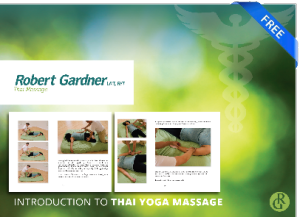Low Back Pain
Thai massage is the best bodywork for dealing with low back pain in my experience. I spent years doing table work to little effect on low back issues but when I learned Thai massage and started using it, low back pain clients glommed onto me in a way that I found puzzling at first. I didn’t realize exactly why it made such a difference but over time it became clear.
People usually feel pain right in the center of their low back, some describe it as a band across the low back and others often describe feeling pain running down their legs they call sciatica. Where they point to, isn’t where the problem is. That is why Thai massage is so effective in dealing with low back pain, it goes to the source.
The source of most low back pain comes from the hamstrings, the glutes and the pelvic bowl in my experience. What is Thai massage really great at accessing? All of those just listed. I’ve seen it so many times there’s a pattern that is ingrained in the way I look at posture.
The video shows a simple way of stretching your hamstrings while in an chair at your office. It’s a good start but long term, get regular Thai massage and start taking yoga classes. Trust me, I’ve learned a lot in the past 11 or so years.

